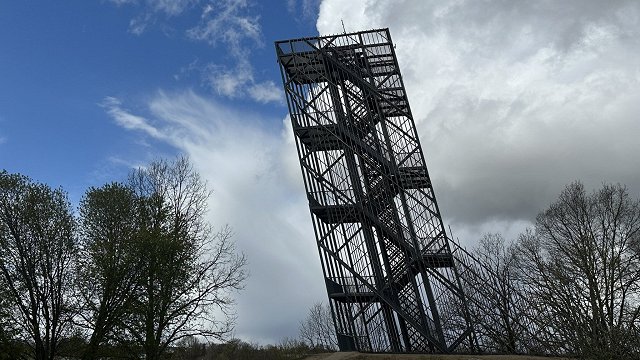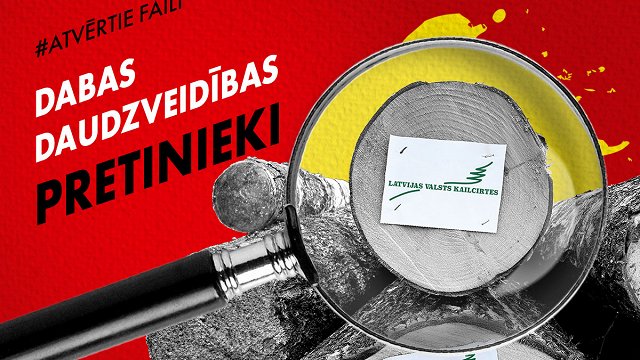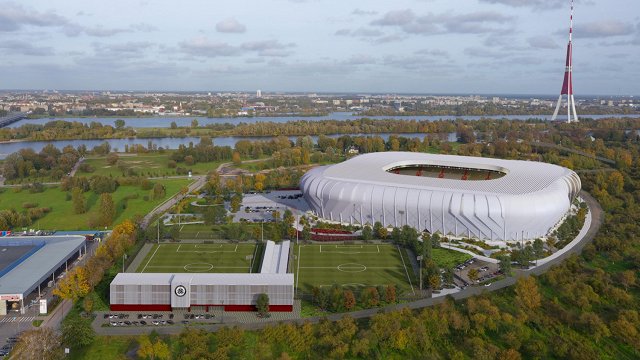The northern border of the stork's habitat is Estonia. In Sweden and Finland, these birds are rare. But we can see white storks in large numbers in Latvia. The first storks arrive at our breeding sites at the end of March, and the last, usually the less experienced and young birds, arrive in May.
"Food is the most powerful ecological factor that determines the numbers and well-being of any living thing. If there is something to eat, then there are also eaters," explained Māra Janaus, ornithologist and White Stork Monitoring Manager.
The stork's diet includes insects in all stages of development, voles, moles, amphibians, reptiles, as well as the young of ground-nesting birds and even bunnies. Storks are serious predators with an excellent appetite. When the chicks hatch, foraging will be particularly important.
A stork's nest can weigh up to one tonne, but if it collapses, the birds are quite industrious and will quickly build a new one.
"They are very active at the moment. The foundations are being laid now," the ornithologist explained.
The first eggs appear in the stork's nest around mid or late April. After 33-34 days, the chicks hatch.
For the fourth year, The Latvian Fund for Nature (LDF) in cooperation with the electricity distributor JSC "Sadales tīkls" has been providing a live broadcast from the stork's nest located atop an electricity pole.
It is notable that in the 1970s, only 1% of stork nests were on electricity or telephone poles. Then, people used to install cartwheels in the treetops. Today, 80% of nests are on electricity poles, which is more than 8,000 nests in Latvia.
"The stork is a big bird and it makes its nest in places where it can fly easily. Electricity pylons are, of course, quite a convenient place, and if we look, we could say that we have a large stork farm in Latvia. But I have to say that it is not the safest place for storks to nest, and it does interfere with the infrastructure a little. When nests are built, breaks can occur, and unfortunately, storks also die, because there are wires under the nests that carry electricity," said Jānis Aizpors, Communications Project Manager at Sadales tīkls.
Therefore, the nests located on electricity poles are looked after, and if they become dangerous and may fall down, the employees of "Sadales tīkls" together with ornithologists decide on their removal. This is, of course, done when the nest is not occupied.
If there is an electricity pole near your house with a stork nest on it that is in danger of falling or has already fallen, you can ask "Sadales tīkls" for a special artificial base to be installed.
Since 1934, when the first International White Stork Census took place, people have been invited to take part from time to time. The last such count in Latvia took place in 2014.
"This year is the 8th International White Stork Census, and of course, Latvia will take part in it, just like in all the previous ones. So we have great data to compare how things have been and to draw conclusions about what will happen," said the White Stork Monitoring Manager Māra Janaus.
Information on what to do and how to do it can be found on the websites of the Latvian Ornithological Society (LOB) and dabasdati.lv. It is important to note the location of the nest and whether it is inhabited.
"It is also necessary to indicate what the nest is built on - a building, a tree, or a post. If it can be determined, then whether the nest has an artificial base or whether a human has created a base on which the stork further builds its nest. And, of course, in July, we need to see, if possible, whether and how many storklings have grown up in this nest," Janaus explained.
Although the stork population in Latvia is growing and stable, there are concerns about its future.
"World experience shows that in places where the landscape has changed a lot towards more intensive management, there is simply nothing for storks to eat, because wetlands disappear, frogs disappear, large insects that are important food for them disappear, and this means that they are unable to feed their young," said ornithologist Jānis Ķuze.



























